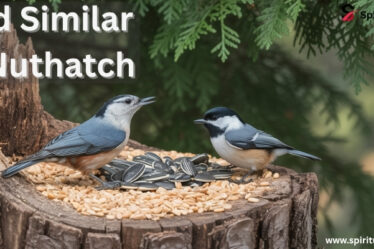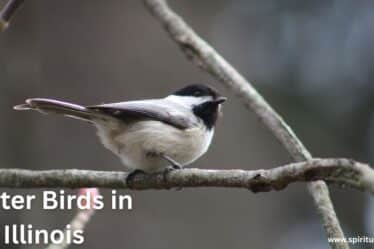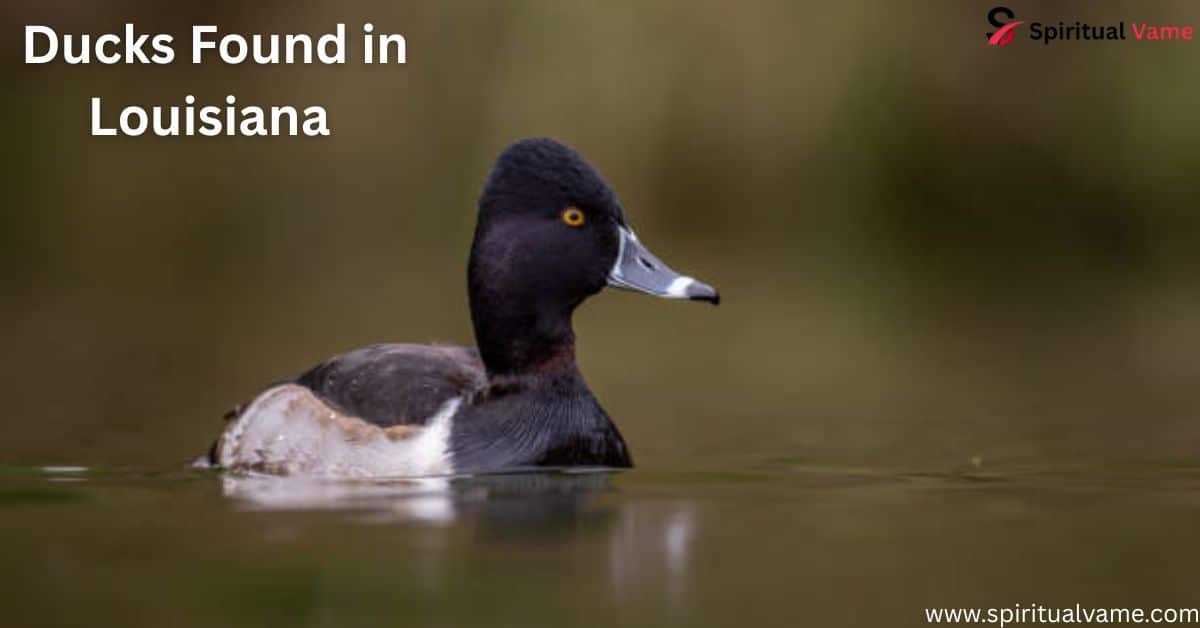
Louisiana is a special place when it comes to waterfowl. Rich with wetlands, marshes, lakes, and rice fields, this southern state offers a perfect home for many duck species. Whether you’re into birdwatching, duck hunting, or just love nature, learning about the ducks found in Louisiana gives you a deeper look into the state’s incredible wildlife. You’ll find migratory birds flying down from Canada and North America, and you’ll also see wild ducks that live here year-round. This guide introduces you to the most common ducks in the region, including their behavior, habitat, and how to identify them by their plumage, wingspan, tail, and vocalization. Resources like Birdzilla – Enjoyin’ Birds and eBird help bird lovers keep track of sightings across Louisiana.
Louisiana Duck Species – 10 Ducks & Where To Find Them
You’ll find ducks across Louisiana in places like the Atchafalaya Basin, Rockefeller Wildlife Refuge, and even in urban ponds or small lakes near cities. Ducks thrive in areas with shallow water, wooded swamps, and forested habitats, and they often form flocks in colder months. The state sits along the Mississippi Flyway, a major route for migratory birds coming from as far as Panama and Colombia in the south. During migration seasons, over 31 species of ducks pass through or stay in the state. Each duck has a unique way of life, from how it forages, to where it prefers to nest.
You’ll come across both dabbling ducks that feed on the surface and diving ducks that go underwater to find food. These birds come in all shapes and sizes, from around 15.5 inches long to over 30 inches in some cases. Their colors vary too, from the bright patterns of the Aix sponsa to the bold blacks and whites of the Cairina moschata. Spotting and identifying them takes a good eye and a bit of practice, but the reward is worth it.
Most Common Louisiana Ducks
The most commonly seen ducks in Louisiana include a mix of residents and seasonal migrants. These are the birds you’re likely to see while walking near a pond or looking over a flooded field. The Anas platyrhynchos, or mallard, is perhaps the most recognizable. Meanwhile, the Spatula discors, or blue-winged teal, is one of the first ducks to arrive during migration. You’ll also often see the Mareca strepera, known as the gadwall, and the Aythya collaris, or ring-necked duck.
Some ducks stay in Louisiana year-round while others visit only during winter months. These birds can be spotted in remote areas like swamps or in more public places like city parks. Bird watchers often use resources like eBird and Birdzilla – Enjoyin’ Birds to track sightings and gather information about behavior, habitat, and population changes. The mix of domesticated and ornamental ducks also adds to the diversity, though wild species are more common in natural areas.
Black-bellied Whistling-Duck
The Dendrocygna autumnalis, or black-bellied whistling-duck, is easy to identify thanks to its long legs, upright posture, and soft whistle call. These ducks are usually found in urban ponds, marshes, and flooded rice fields. They are unusual among ducks because they often nest in tree cavities, which is more typical of wood ducks. With an average size around 21 inches, they’re one of the larger species you’ll see.
They’re social birds and often gather in large flocks. You can hear their distinctive squealing sounds from a distance. Though they’re native to areas like Texas and even Central America, including Panama and Colombia, they have established stable populations throughout Louisiana.
Wood Duck
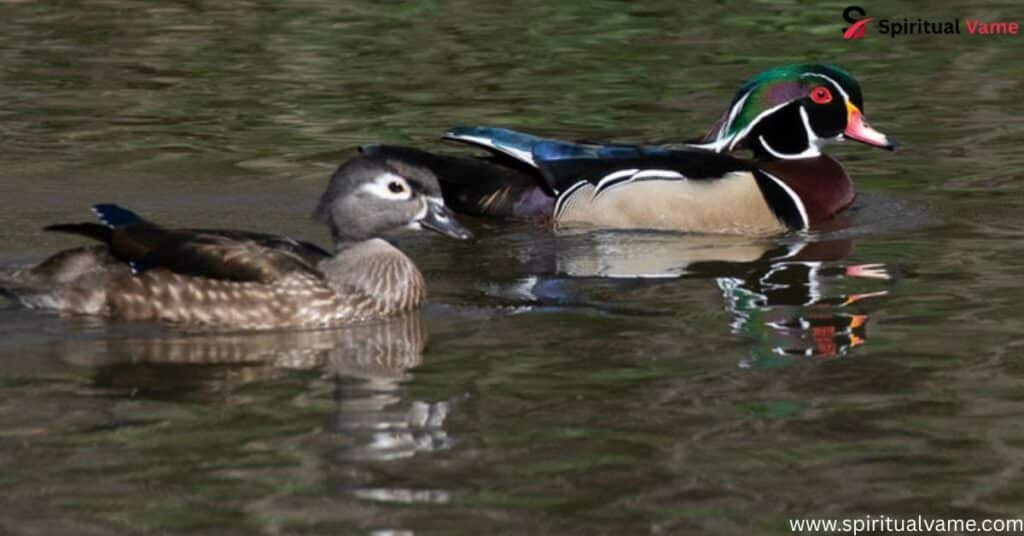
The Aix sponsa, or wood duck, is one of the most colorful ducks found in Louisiana. It has a shining green crest, red eyes, and beautifully patterned feathers. You’ll often find wood ducks in wooded swamps and along riverbanks where there are plenty of trees. Like the whistling-duck, wood ducks nest in tree cavities.
They’re about 18.5 inches long and have a wingspan of up to 30 inches. These birds don’t just look good—they also have unique behaviors. They’re strong flyers and can take off straight from the water. Their soft whistles and gentle calls are part of their quiet nature, making them a treat to observe in the wild.
Mallard
The Anas platyrhynchos, or mallard, is probably the most well-known duck in North America. Males are easy to spot with their green heads and yellow beaks, while females are brown with orange bills. They live in wetlands, ponds, and even city lakes, and are often seen in public parks.
Mallards can grow up to 25 inches long and have a wingspan of around 35 inches. They are adaptable and can live almost anywhere there is water. They dabble at the surface for food, eating both plants and small animals. Mallards are also known for hybridizing with other duck species like the Mottled Duck, which can make identification tricky.
Blue-winged Teal
One of the first ducks to arrive in Louisiana each fall is the Spatula discors, or blue-winged teal. This small, fast duck is about 15.5 inches long and has pale blue patches on its wings that flash in flight. You’ll see them in shallow water areas like flooded fields, marshes, and temporary ponds.
These ducks are shy and quick, often flying in tight flocks. Their small size and low flight path make them popular among duck hunters. They usually arrive early in the season and leave by winter, heading further south. Despite their short stay, they’re one of the most exciting ducks to spot in the wild.
Mottled Duck
The Mottled Duck is closely related to the mallard but is a separate species. It is a year-round resident in Louisiana and prefers coastal wetlands, brackish marshes, and rice fields. With a size of about 23 inches, it looks similar to a female mallard but has a slightly darker plumage and a more distinct facial pattern.
Mottled Ducks are usually found in pairs or small groups rather than large flocks. They tend to stay away from highly urbanized areas and prefer quiet, remote areas where they can forage in peace. As one of the few non-migratory ducks in the region, they are an important part of Louisiana’s bird population.
Lesser Scaup
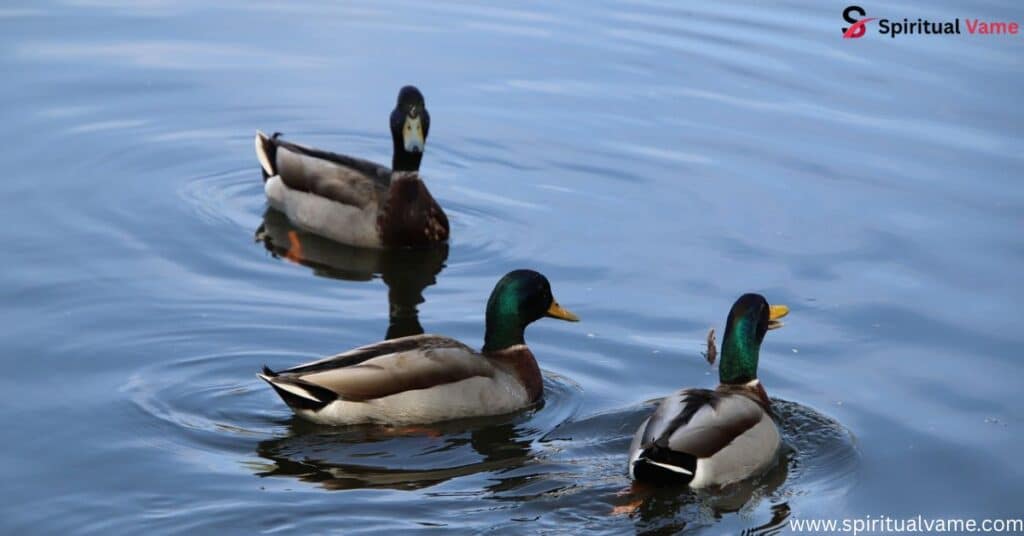
The Aythya affinis, commonly called the Lesser Scaup, is a diving duck often seen on large lakes and deep ponds. They have a black head, white sides, and grayish back, and are about 17 inches long. These ducks dive deep underwater to catch food like insects and plants.
They often form huge flocks, sometimes numbering in the thousands, especially during migration. Though they look a lot like the Greater Scaup, they can be told apart by their slightly smaller size and more rounded head. You’ll mostly spot them in winter, scattered across southern Louisiana waters.
Northern Shoveler
The Northern Shoveler is famous for its oversized, spoon-shaped beak, which it uses to sweep through water and scoop up food. Males have bright green heads and bold chestnut flanks, while females are more brown and speckled. Their size ranges around 20 inches, with a wide wingspan to match.
They feed in a spinning motion, stirring up the water to trap food. Found mostly in shallow water and flooded rice fields, they migrate in large numbers and often mix with other dabbling ducks. Their strange look makes them stand out in any group.
Gadwall
The Mareca strepera, or gadwall, may not be as colorful as other ducks, but it has fine, detailed patterns that look like lace. This medium-sized duck, about 21 inches long, prefers ponds, wetlands, and timbered swamps.
They are calm, often seen swimming slowly or feeding quietly in the water. Gadwalls don’t make much noise, and their subtle look helps them blend into their surroundings. Look for their white belly and black rump to help with identification.
Muscovy Duck
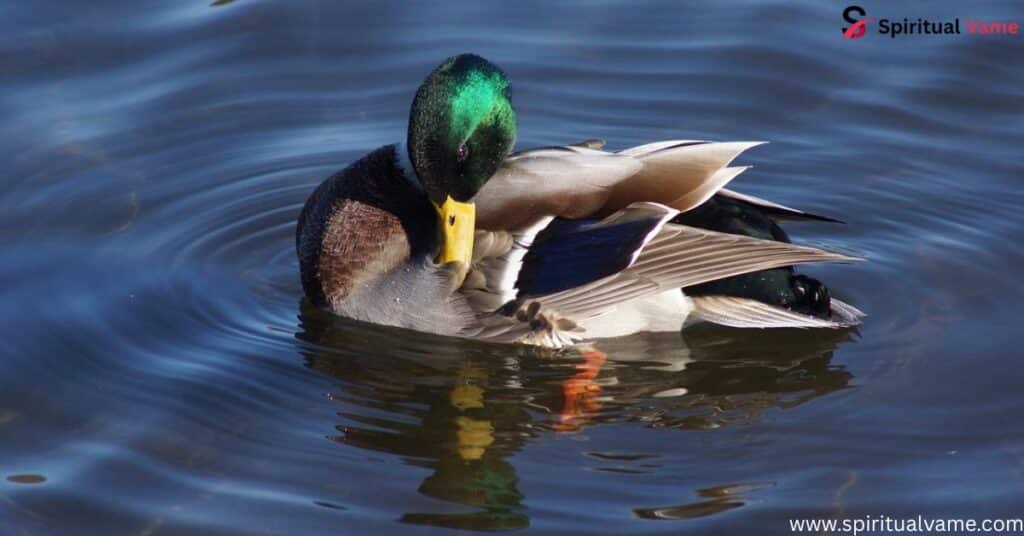
The Cairina moschata, or Muscovy Duck, is one of the largest ducks you’ll see in Louisiana, sometimes reaching 30 inches long with a wingspan over 48 inches. Wild Muscovies are native to Central and South America, including Panama and Colombia, but now they are found throughout southern USA, especially near urban ponds and drainage ditches.
They’re easy to recognize thanks to their red, warty face and mostly black and white body. While many Muscovies are domesticated, you’ll still find wild ones in more remote areas. Their size and quiet nature make them very different from other ducks.
Ring-necked Duck
The Aythya collaris, or Ring-necked Duck, is a small diving duck with a sharp black-and-gray appearance. It has a wingspan of about 25 inches and is around 17 inches long. Males have a slight brown ring around their neck, which is hard to see, but gives the species its name.
You’ll find them in freshwater lakes, flooded timber, and deeper marshes. They dive for food and often flock with other diving ducks. Quick and agile, ring-necked ducks are a favorite among bird watchers for their sleek look and graceful movements.
Conclusion
If you love nature, you’ll enjoy discovering the many ducks found in Louisiana. From colorful wood ducks to quiet gadwalls, there’s something special about each one. Ducks found in Louisiana live in swamps, lakes, and even city ponds. Some stay all year, while others only visit during migration. You’ll see small teal, large muscovies, and everything in between. Watching ducks found in Louisiana is fun and peaceful. Use maps and apps to track them. Bring binoculars and head outdoors. Ducks found in Louisiana come in all colors and sizes. Explore different habitats. Spot as many as you can. Ducks found in Louisiana are waiting to be seen.


